Clancy Tucker's Blog, page 224
April 27, 2016
28 April 2016 - CLANCY TUCKER PHOTOGRAPHY - PLANTS

CLANCY TUCKERPHOTOGRAPHY- PLANTS -
G'day folks,
Welcome to part-three of my series of photographs taken recently. This one is plants. Anyone who has been to Asia will know how lush it is and how easily plants grow. Check out these ...




















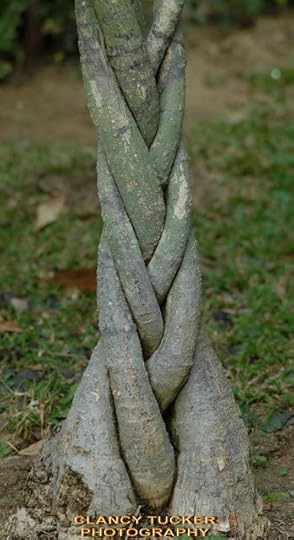












Clancy's comment: There ya go; some of many hundreds. And, yes, I did try to photograph the local squirrels but they were hard to keep still. All of these were taken in Vietnam and Thailand. Vietnam was bloody cold and misty, yet Thailand was hot and sunny. If you are keen to learn how nature ticks, buy a good camera and get up close and personal.
I'm ...


Published on April 27, 2016 15:01
April 26, 2016
27 April 2016 - QUAKER GUNS
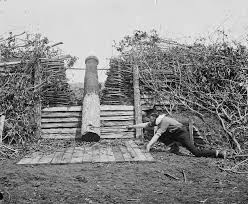
QUAKER GUNS
G'day folks,
You may well ask yourself, 'What are Quaker guns?' Read on ...
Used in warfare to fake out an enemy, a Quaker gun is a dummy piece of artillery, typically constructed of wood and sometimes painted black. The term comes from the fact that Quakers, members of a religious group formally known as the Society of Friends (or Religious Society of Friends), traditionally believe in pacifism and non-violence. Quakerism began in England in the mid-1600s as a new Christian sect that rejected grandiose religious ceremonies, didn’t have clergy and held that the presence of God existed in every person.
In 1682, Englishman William Penn, one of the many early Quakers who faced persecution in his homeland, arrived in America and founded the colony of Pennsylvania as a place for religious freedom.

It’s uncertain exactly when the term Quaker gun originated, but one such sham weapon was employed in the Revolutionary War battle at Rugeley’s Mill in South Carolina. (The Quakers’ anti-war stance stopped them from actively participating in the American Revolution.) During that engagement, on December 4, 1780, Continental forces under the command of Colonel William Washington attacked the fortified barn where some 100 Loyalists under Colonel Henry Rugeley were holed up. When the attack failed, Washington, lacking artillery, had his soldiers construct a phony cannon from a log—and then called for Rugeley and his men to surrender or else. The ploy worked and the Loyalists gave up.

During the U.S. Civil War, Quaker guns were used as a means to make fortifications seem from a distance as if they were stronger, as well as a way to make it look like troops were occupying a certain position when in reality they’d already retreated. In one example during Union General George McClellan’s 1862 Peninsula Campaign, the Confederates placed logs made to resemble cannons at their earthworks around Centerville, Virginia, and duped Union scouts into thinking these sites were heavily fortified. As a result, McClellan delayed his troops’ advance and the rebels escaped the area.

Clancy's comment: There ya go. I guess all stops are pulled out to win a war.
I'm ...

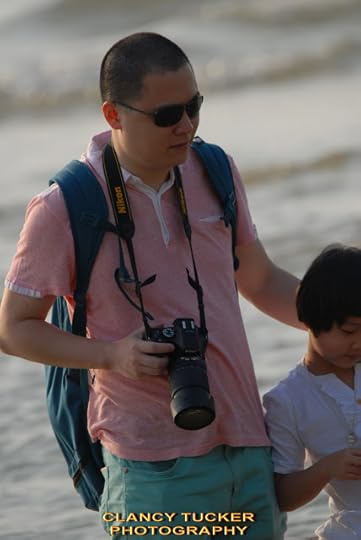
Published on April 26, 2016 15:37
April 25, 2016
26 April 2016 - CORETTA SCOTT KING
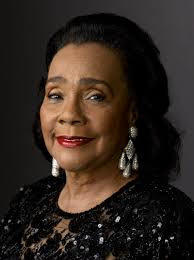
CORETTA SCOTT KING
G'day folks,
Welcome to the life and times of a famous woman. Coretta Scott King was an American author, activist, and civil rights leader, and the wife of Martin Luther King, Jr. from 1953 until his death in 1968. Coretta Scott King helped lead the African-American Civil Rights Movement in the 1960s.
Synopsis
Coretta Scott King was an American civil rights activist and the wife of civil rights leader Martin Luther King Jr. She established a distinguished career in activism in her own right. Working side-by-side with her husband, she took part in the Montgomery Bus Boycott and worked to pass the Civil Rights Act. After King's death, she founded the Center for Nonviolent Social Change in Atlanta.

Early Life Coretta Scott King was born Coretta Scott on April 27, 1927, in Marion, Alabama. In her early life, Coretta was as well known for her singing and violin playing as her civil rights activism. She attended Lincoln High School, graduating as the school's valedictorian in 1945, and then enrolled at Antioch College in Yellow Springs, Ohio, where she received a Bachelor of Arts degree in music and education. After graduating from Antioch, Coretta was awarded a fellowship to the New England Conservatory of Music in Boston, Massachusetts, the city where she would meet her future husband, famed civil rights leader Martin Luther King Jr. (At the time, Martin Luther King Jr. was studying theology at Boston University.)
Coretta earned her second collegiate degree, in voice and violin, from the New England Conservatory of Music in the early 1950s. Not long after, on June 18, 1953, Coretta and Martin married and moved to Montgomery, Alabama, where he served as pastor of Dexter Avenue Baptist Church and she, subsequently, oversaw the various tasks of a pastor's wife.
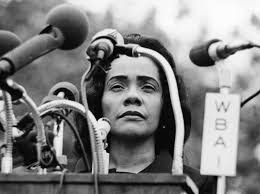
Civil Rights Activist Working side-by-side with her husband throughout the 1950s and '60s, Coretta took part in the Montgomery Bus Boycott of 1955, journeyed to Ghana to mark that nation's independence in 1957, traveled to India on a pilgrimage in 1959 and worked to pass the 1964 Civil Rights Act, among other civil-rights-related work.
Though best known for working alongside her husband, Coretta established a distinguished career in activism in her own right. Among many roles, she worked as a public mediator and as a liaison to peace and justice organizations.
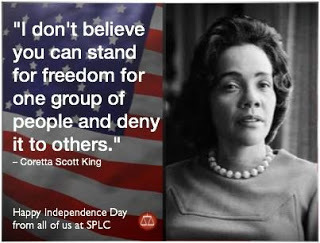
On April 4, 1968, while standing on a balcony outside of the Lorraine Motel in Memphis, Tennessee, Martin Luther King Jr. was struck and killed by a sniper's bullet. The shooter, a malcontent drifter and former convict named James Earl Ray, was hunted for nearly two months before he was apprehended. King's assassination sparked riots and demonstrations in more than 100 cities across the country.
Following her husband's assassination, Coretta continued their work. She founded the Martin Luther King Jr. Center for Nonviolent Social Change, based in Atlanta, Georgia, serving as the center's president and chief executive officer from its inception. In 1980, a 23-acre site around Martin Luther King Jr.'s birthplace was designated for use by the King Center. The following year, a museum complex was dedicated on the site.
In 1995, Coretta passed the reins of the King Center over to her son, Dexter, but she remained in the public eye for several years thereafter, until her death in 2006. She wrote regular articles on social issues and published a syndicated column, and was also a regular commentator on CNN (beginning in 1980). In 1997, she called for a retrial for her husband's alleged assassin, James Earl Ray (Ray died in prison before the trial could be effected, on April 23, 1998).
Coretta was also behind the 15-year fight to have her husband's birthday instituted as a national holiday—President Ronald Reagan finally signed the bill in 1983, thusly creating "Martin Luther King Day." Additionally, she published a memoir, My Life with Martin Luther King, Jr., in 1969.
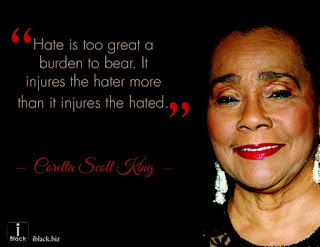
Coretta and Martin Luther King Jr. had four children together: Yolanda Denise (b. 1955), an actress; Martin Luther King III (b. 1957), who now serves as president of the Southern Christian Leadership Conference; Dexter Scott (b. 1961), who runs the King Library and Archive; and Bernice Albertine (b. 1963), a lawyer and Baptist minister.
Coretta Scott King suffered a heart attack and stroke in August 2005. She died less than a year later, on January 30, 2006, at the age of 78, in Playas de Rosarito, Mexico.
Today, King is remembered for her brave work on behalf of civil rights in the United States. Her life has been an inspiration to many over the past several years, and will continue to inspire for decades to come. She once said, "I believe all Americans who believe in freedom, tolerance and human rights have a responsibility to oppose bigotry and prejudice based on sexual orientation."

Clancy's comments: They say that behind every successful man is a great woman. History will record that to be true in so many cases.
I'm ...


Published on April 25, 2016 14:48
April 24, 2016
25 April 2016 - 'KICK-ASS' TYLER - New Release - A story about abduction

'KICK-ASS' TYLER
- New Release -
A story about abduction, friendship, teamwork, and a determination to succeed when facing great odds.
G'day folks,
Time to release my next book which I wrote some years ago. This is a story about one of the gutsiest girls you will ever meet - Sam Tyler. It is also book one in a series of books about the same girl. The next two books have also been written - 'Life Sucks' and 'Streetwise'. Stay tuned!

ORIGINS OF THE STORY:
When I wrote this, I knew several teen girls who were going through a fairly hard time, for various reasons. One, wasn't handling the divorce of her parents, and the other was trying to come to terms with the sudden death of her brother. So, I thought why not write a book that will inspire them to keep going. Well, it worked. Both the young girls loved this story and found the main character, Sam, empowering. They have since gone on to achieve great things in their own lives.

WHY CHOOSE A GIRL AS THE MAIN CHARACTER?
Why not? Many who have read this as a manuscript have said that the main character would have been my daughter. Mm ... Fair comment. Besides that, as a male author, I wanted the challenge of writing about a ballsy, young girl, and loved every minute of it. Most, if not all of my books have hidden messages for teenagers. Why? Simple. Many kids today have no mentors or role models. Also, a majority of them come from divorced or dysfunctional families. So, I always try to write stories that are not only believable, but also impactful on my readers. That is, give them a few disguised tips on how to deal with situations in their own life. Hope it works.

WHAT ISSUES ARE INCLUDED IN THIS BOOK?
Kidnapping, team-work, loss of a loved one, high school, confidence, friendships, acceptance of step-parents, authority and courage.

INTRODUCTION TO STORY:
‘Kick-Ass’ Tyler is book one of a series about the life and times of one of the smartest young women you will ever meet – Sam Tyler. So, get in, buckle-up and hang on. You’ll be glad you did.
Clancy Tucker

HERE IS THE BLURB:
Sam Tyler is a feisty 14 year-old girl who lives in a seaside town, and becomes rebellious after the death of her father. Her mother has remarried and Sam conflicts with her stepfather, Max. When a classmate, Zoran Cepnic, is abducted, Sam forms a committee to find him, and the entire school is fired-up to help. Her stepfather helps Sam and their relationship blossoms.
Sam does some investigations of her own, wags school to visit Zoran’s parents, and sneaks out at night and finds Zoran’s watch at a bus stop where he was abducted. Excited, Sam rings the police and forms a good friendship with the leading detective.
Sam is interviewed on national television by a famous broadcaster, Martha Benson. The same day, she is approached by a weird guy on the beach. The next evening, she is also abducted and ends up in an isolated farmhouse with Zoran. He’s alive! Sam and Zoran attempt to escape by removing floorboards, but are stopped by their abductor. Will they escape? How will the police find them?

Clancy's comment: Well, there you have it folks. I'm convinced that this particular book will be a big hit with young girls; especially recalcitrant ones who might have an attitude. Any names spring to mind? Daughters? Nieces? Grandkids? This book would make a great gift for any of them. Adults might learn a few tricks as well. So, don't be shy, head up to the top right-hand corner of this page and grab a copy:- e-Book or paperback.

Today is Anzac Day in Australia, and I will be the official photographer for our local region. It is a day when we pay our respects to those who lost their lives in war. It is also a day for us to offer thanks to those who came home, battered and bruised.




REST IN PEACE
I'm ...
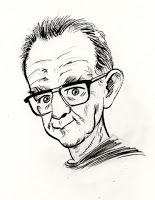

Published on April 24, 2016 12:32
April 23, 2016
24 April 2016 - MOVING PICTURES

MOVING PICTURES
G'day folks,
Welcome to some more amazing pictures.























Clancy's comment: I love these.
I'm ...


Published on April 23, 2016 16:10
April 22, 2016
23 April 2016 - BUGSY SIEGEL
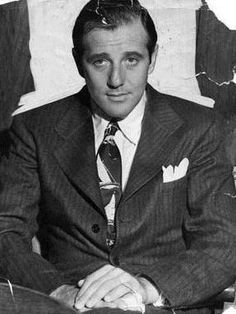
BUGSY SIEGEL
G'day folks,
Here is another interesting character with a colourful background. Benjamin "Bugsy" Siegel was a Jewish American mobster. Siegel was known as one of the most "infamous and feared gangsters of his day". Described as handsome and charismatic, he became one of the first front-page-celebrity gangsters.
Infamous mobster Benjamin “Bugsy” Siegel was born on February 28, 1906 in New York. From his early days as a street thug, he rose to become a feared crime boss, bookmaker and Hollywood playboy who conspired with the likes of Meyer Lansky and Lucky Luciano. Siegel also left his mark on Las Vegas by building the luxurious Flamingo hotel in 1946, but he was murdered just a few months later under still-mysterious circumstances. Check out nine fascinating facts about one of American history’s most iconic gangsters.
1. Siegel became a gangster as a teenager.
Siegel was born into a family of Austro-Hungarian Jews who immigrated to the United States in 1903 and settled in Manhattan’s Lower East Side. In an effort to escape his impoverished upbringing, he drifted to the streets as a boy and took part in crimes such as burglary and organizing protection rackets for street peddlers. Siegel later met and befriended future crime boss Meyer Lansky during his teen years, and together the two formed the Bugs and Meyer Mob, a gang that dabbled in robbery, gambling and murder. With Prohibition in full effect, the group also joined with mobster Arnold Rothstein in establishing a lucrative business running bootleg liquor along the East Coast. The young Siegel flaunted his newfound wealth by wearing expensive clothes and frequenting high-class nightclubs. By 1931, he was rich enough to buy an apartment in Manhattan’s Waldorf Astoria Towers.
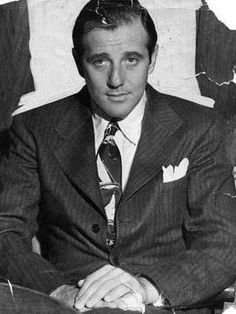
2. He hated his famous nickname.
As a teen, Siegel’s violent temper and mercurial personality saw friends describe him as “crazy as a bedbug.” Many soon began calling him “Bugsy” or “Bugs,” but the young gangster loathed the nickname and supposedly threatened anyone who used it. “My friends call me Ben,” he once said, “strangers call me Mr. Siegel, and guys I don’t like call me Bugsy, but not to my face.”
3. Siegel was linked to several high-profile murders.
Siegel’s criminal reputation is steeped in myth and legend, but there is evidence that he played a role in around a dozen killings during his rise in the 1920s and 30s. When an assassin once tried to murder him by lowering a bomb down a chimney, an injured Siegel supposedly checked himself into the hospital and then snuck out and murdered the man, only to later slip back into his room, alibi intact. Siegel is also reported to have been one of the men who gunned down Sicilian mobster Giuseppe “Joe the Boss” Masseria in 1931, and he was widely linked to Lucky Luciano and the infamous “Murder, Inc.,” a syndicate of contract killers who carried out hits for the Italian and Jewish mafias.
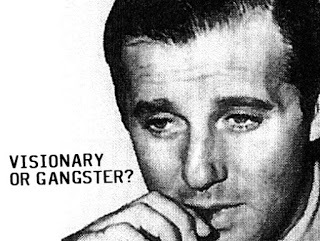
4. He was a friend of several Hollywood movie stars.
In the mid-1930s, Siegel moved from New York to Los Angeles and set up a new criminal empire on the West Coast. Along with dipping his toes in gambling, wire services and drugs—he may have helped establish the narcotics trade between Mexico and the United States—he also became a fixture in the Hollywood social scene. Siegel’s tough guy persona and movie star good looks proved irresistible to celebrities, and he hobnobbed with the likes of Cary Grant, Frank Sinatra and blonde bombshell Jean Harlow, who became the unofficial godmother of his young daughter. Friends would later say that Siegel harbored a secret desire to be an actor. He was a frequent visitor to Hollywood movie sets, and once even organized a screen test for himself.
5. Siegel led a search for buried treasure in Costa Rica.
Siegel’s reputation as a celebrity gangster reached new heights in 1938, when he joined a band of Hollywood aristocrats on a bizarre schooner trip to the seas off the coast of Costa Rica. Lured by reports of buried treasure, Siegel and his fellow passengers sailed for remote Cocos Island and spent several days digging, drilling and even dynamiting hillsides in a fruitless search for it. The harebrained treasure hunt came up empty handed, and the group’s ship later had to be towed to Mexico for repairs after it was ravaged in a storm and left adrift. News reporters pounced on the “hell ship” story after Siegel returned to California, with some alleging that the voyage had involved a mutiny by the crew or that it had been a cover for a drug smuggling or gunrunning operation.
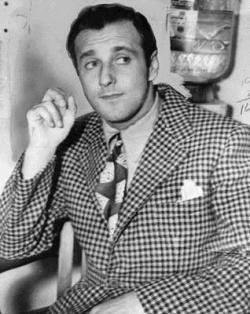
6. He was never convicted of a serious crime.
Siegel was arrested on suspicion of everything from possession of narcotics and firearms to murder and rape, but he was only found guilty of two minor offenses: a 1930 charge of “gambling and vagrancy” and a 1944 charge of “placing bets illegally on a horse race.” In both cases, he walked free after paying a fine. Siegel’s most serious brush with the law came in 1941, when he was arrested for the murder of an underworld figure named Harry Greenberg. He spent time in jail, but the charges were dropped after a key state’s witness died under mysterious circumstances. Siegel remained a suspected criminal kingpin, however, and was later the subject of extensive surveillance by the Federal Bureau of Investigation in the years before his death.
7. Siegel tried to sell explosives to Benito Mussolini.
By far the strangest chapter in Siegel’s career unfolded in 1939, when he partnered with a Hollywood socialite named Countess Dorothy di Frasso in a scheme to peddle arms to the fascist Italian government. According to historian Larry Gragg, the deal centered on a newfangled explosive called atomite, which was supposedly more powerful than dynamite. Siegel and the Countess hoped to secure a contract to sell it to dictator Benito Mussolini, but their plan went up in smoke after the atomite failed to impress during a demonstration. Before they left Rome, the pair reportedly crossed paths with Adolf Hitler’s second-in-command, Hermann Göring, who was in town for an audience with Mussolini. Siegel, who was Jewish, would later quip that he wished he had assassinated the high-ranking Nazi when he had the chance.
8. He’s often incorrectly credited with inventing the Las Vegas Strip.
In 1946, Siegel tried to turn from mobster to real estate mogul by taking over the stalled construction on a flashy Las Vegas hotel and casino known as the Flamingo. With financial backing from old pal Meyer Lansky and several other underworld figures, he eventually burned through $6 million turning the Flamingo into one of the most lavish properties on the fledgling Las Vegas Strip. The bloated project lost money during its first few months in operation, but business later picked up in the months before Siegel’s murder in June 1947, and the Flamingo became the mafia’s first major foothold in Las Vegas. Popular legends and fictional portrayals have since characterized Siegel as a visionary who invented modern Las Vegas. But while he may have added a dose of glitz and glamour to “sin city,” there were already several casinos and hotels in operation by the time he arrived. “Ben Siegel did not invent the luxury resort-casino,” wrote Meyer Lansky biographer Robert Lacey. “He did not found the Las Vegas Strip. He did not buy the land or first conceive the project that became the Flamingo. But by his death he made them all famous.”
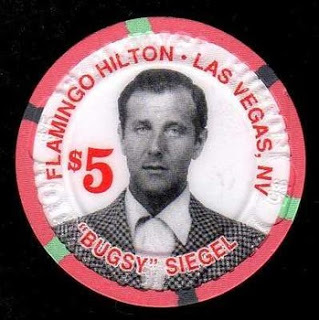
9. Siegel’s 1947 murder is still unsolved.
On the evening of June 20, 1947, Siegel was reading a newspaper at his girlfriend’s Beverly Hills home when a gunman fired nine shots through the window with a .30 carbine. Siegel was hit by four slugs—one of which knocked an eye out of its socket—and died instantly. It was a classic gangland hit, but despite a media circus and a massive police investigation, the precise motive for the killing has never been confirmed. Most researchers speculate that Siegel’s criminal associates were fed up with the soaring coasts of the Flamingo hotel and casino, while others say he was suspected of skimming money from the construction budget. Other theories include a mob struggle over the horse racing wire service, which Siegel controlled, or even that Siegel was embroiled in a love triangle with his girlfriend and another gangster. The identity of the shooter is also cloaked in mystery. Mob figures Frankie Carbo and Eddie Cannizarro are among the leading suspects, but the case remains open to this day.

Clancy's comment: What amazing lives these characters had.
I'm ...


Published on April 22, 2016 16:14
April 21, 2016
22 April 2016 - THINK ABOUT THIS

THINK ABOUT THIS
G'day folks,
Time for some great quotes to stir your mind.

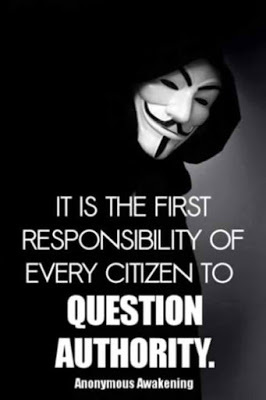









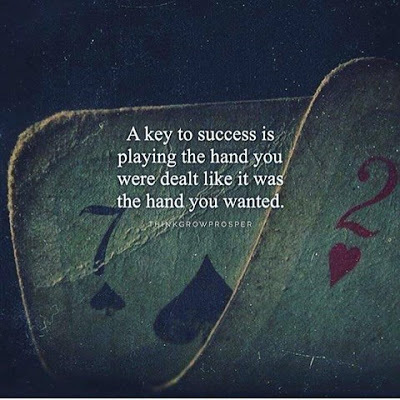





Clancy's comment: I hope some of these have stirred you up.
I'm ...


Published on April 21, 2016 15:20
April 20, 2016
21 April 2016 - STEVE McQUEEN
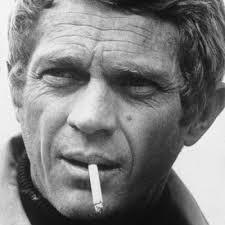
STEVE McQUEEN
G'day folks,
Welcome to some background on one of my favourite actors. Terence Steven "Steve" McQueen was an American actor. Called "The King of Cool", his "anti-hero" persona, developed at the height of the counterculture of the 1960s, made him a top box-office draw of the 1960s and 1970s.
Thirty-five years after his death, Steve McQueenretains a certain cache as a hipster movie star. He was dubbed the "King of Cool" during his lifetime, and no one since has come along to seriously challenge the title. His screen performances, particularly in his iconographic roles in The Magnificent Seven, The Great Escape, The Thomas Crown Affair, and Bullitt, are marked by an unflappable, even emotionless exterior that suggested a core of steel but also hidden depths. Compact, blond and blue-eyed, he generally looked great, and exuded an effortless masculinity and sense of style. And he was a racer, associated more than any other movie star in film history with fast cars and motorcycles.
The racing obsession is showcased in a new documentary, Steve McQueen: The Man and Le Mans. At the top of his career, the actor met his Waterloo with the 1971 flop Le Mans, a portrait of the 24-hour French endurance race McQueen starred in for his company Solar Productions. Opting for a semi-documentary style, McQueen and his producing partners neglected to come up with a script before production started, and the actor's legendarily difficult diva behavior on set led to the early departure of director John Sturges, who had more than a decade earlier given the star his most crucial breaks.
Despite its failure, the film is highly regarded in racing circles, especially for its substantial footage from Le Mans itself. The new documentary, directed by Gabriel Clarke and John McKenna, makes use of considerable behind-the-scenes footage and features interviews with McQueen’s first wife Neile Adams and son Chad.
The Man and Le Mansmay provide an exhaustive look at one aspect of McQueen’s persona, but his infatuation with racing was perhaps a symptom rather than the key to the actor’s psyche. The facts of his life point to a complexity that resists simple analysis.
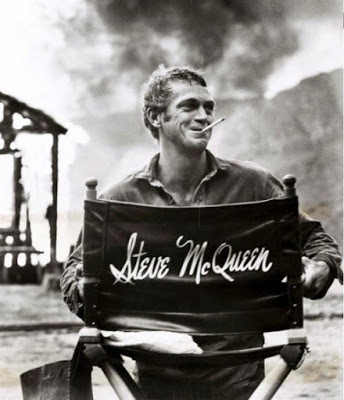
McQueen, who was born in Indiana in 1930, had a textbook-level traumatic childhood.
His roustabout father abandoned him at six months, and his mother, an alcoholic sometime-prostitute, soon left Steve in the care of her parents and uncle, a Missouri farmer. The boy joined his remarried mother in Indianapolis, and again after her second remarriage in Los Angeles, but suffered beatings at the hands of both stepfathers. Steve escaped to the streets and juvenile delinquency, eventually ending up at California Junior Boys Republic, a progressive reform school, where he resolved to straighten himself out.
The GI Bill and Yiddish theatre gave him his start in acting.
After being released from Boys Republic at age 16, Steve joined the merchant marine and then the United States Marines, where he spent a fair amount of time in the brig. After his discharge, he studied acting at Sanford Meisner Playhouse on the GI bill, and made his stage debut with a small role in Yiddish opposite Molly Picon. Broadway roles (The Member of the Wedding, A Hatful of Rain) followed, and then a relocation to Hollywood. McQueen made his film debut with a bit in Somebody Up There Likes Me (1956), which starred that other blue-eyed icon, Paul Newman. Steve's first lead movie role came in the 1958 shock programmer The Blob, and TV stardom was his with the Western series Wanted: Dead or Alive, in which the actor played a bounty hunter.
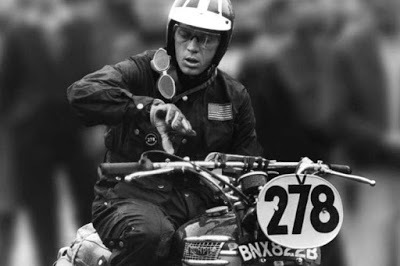
Sammy Davis, Jr. didn't break his leg, but McQueen did go on in his place.
A falling out with pally Frank Sinatragot Davis nixed from the cast of John Sturges' 1959 Never So Few, leaving McQueen with a major supporting role. The next year, the actor became one of Sturges's Magnificent Seven, a smash that left him itching to leave TV for good. His series cancelled, Steve took some time to gain his film-star footing, but in another ensemble piece for Sturges, 1963's The Great Escape, a climactic motorcycle chase catapulted him to the A-list and set his daredevil image in cool-cucumber stone. Other movies included Love with the Proper Stranger, The Cincinnati Kid, and The Sand Pebbles, which earned him an Oscar nomination in 1967. Then, in 1968, a one-two punch—stylish caper The Thomas Crown Affair and lean detective story Bullitt—landed McQueen firmly in the superstar pantheon. The latter film's car chase (in a Ford Mustang GT fastback) through the streets of San Francisco became the prototype for all movie car chases to follow.
But was that Steve behind the wheel?
McQueen prided himself on doing his own stunt work, but in his two most famous action scenes—the 60-foot motorcycle jump in The Great Escape, and the often-airborne hot pursuit in Bullitt—he was largely absent from the vehicles in question. The actor was willing, but the productions’ insurance companies decidedly were not. His desire to drive in the actual 24-hour Le Mans event was similarly nixed. McQueen had to content himself with competing in a few lesser auto races and generally driving like a maniac (with attendant crashes, tickets, and arrests) in his private life.
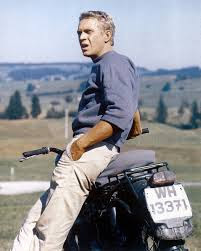
Steve was on Charlie Manson’s hit list.
The actor’s best friend and favorite partner in bad behavior (drugging, womanizing) was hairdresser Jay Sebring. According to McQueen, a tryst with a beautiful blonde was all that kept him from accompanying his friend to Sharon Tate’s house one night in August 1969. The next morning, Sebring was one of those found murdered. After Manson and his gang were arrested, a list of celebrities the cult leader intended to kill surfaced with McQueen’s name on it.
During his last decade, Steve was a reluctant movie star.
The failure of Le Mans seemed to zap the actor’s taste for making films; starring roles in Papillon and The Towering Inferno were strictly money jobs. He retreated to his beach house with second wife Ali MacGraw (met during shooting of Sam Peckinpah’s 1972 The Getaway), continued to indulge his penchant for pot and peyote, and packed on the pounds. After divorcing MacGraw, he married model Barbara Minty and made three more films (again playing a bounty hunter in his last project, The Hunter).
In 1980, McQueen became gravely ill with mesothelioma, a cancer associated with asbestos exposure. He seemed to rally after pursuing a controversial treatment regime in Mexico involving coffee enemas, full-body shampoos, and the drug laetrile, but he died following surgery on November 8, 1980, at age 50. He left $200,000 to Boys Republic in his will. His personal possessions, slated for auction, reportedly included almost 100 cars and 200 motorcycles. The aura of cool is attached to every one.

Clancy's comment: Wow, he was one cool dude. For some reason I've always liked cool actors. Clint Eastwood is another.
I'm ...
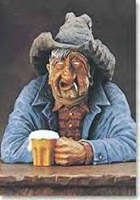

Published on April 20, 2016 15:35
April 19, 2016
20 April 2016 - BARBIE

BARBIE
G'day folks,
We have all heard about this cute lady. But ... On this day in 1959, the first Barbie doll went on display at the American Toy Fair in New York City. Did you know that?
Eleven inches tall, with a waterfall of blond hair, Barbie was the first mass-produced toy doll in the United States with adult features. The woman behind Barbie was Ruth Handler, who co-founded Mattel, Inc. with her husband in 1945. After seeing her young daughter ignore her baby dolls to play make-believe with paper dolls of adult women, Handler realized there was an important niche in the market for a toy that allowed little girls to imagine the future.

Barbie’s appearance was modeled on a doll named Lilli, based on a German comic strip character. Originally marketed as a racy gag gift to adult men in tobacco shops, the Lilli doll later became extremely popular with children. Mattel bought the rights to Lilli and made its own version, which Handler named after her daughter, Barbara. With its sponsorship of the “Mickey Mouse Club” TV program in 1955, Mattel became the first toy company to broadcast commercials to children. They used this medium to promote their new toy, and by 1961, the enormous consumer demand for the doll led Mattel to release a boyfriend for Barbie. Handler named him Ken, after her son. Barbie’s best friend, Midge, came out in 1963; her little sister, Skipper, debuted the following year.

Over the years, Barbie generated huge sales–and a lot of controversy. On the positive side, many women saw Barbie as providing an alternative to traditional 1950s gender roles. She has had a series of different jobs, from airline stewardess, doctor, pilot and astronaut to Olympic athlete and even U.S. presidential candidate.

Others thought Barbie’s never-ending supply of designer outfits, cars and “Dream Houses” encouraged kids to be materialistic. It was Barbie’s appearance that caused the most controversy, however. Her tiny waist and enormous breasts–it was estimated that if she were a real woman, her measurements would be 36-18-38–led many to claim that Barbie provided little girls with an unrealistic and harmful example and fostered negative body image.

Despite the criticism, sales of Barbie-related merchandise continued to soar, topping 1 billion dollars annually by 1993. Since 1959, more than 800 million dolls in the Barbie family have been sold around the world and Barbie is now a bona fide global icon.

Clancy's comment: I think I gave mine away a few years back.
I'm ...


Published on April 19, 2016 15:17
April 18, 2016
19 April 2016 - MOBILE PHONE OBSESSION

MOBILE PHONE OBSESSION
G'day folks,
Here is another anecdote from my recent trip. I wrote this as an editorial for a newspaper.
Well, after a very gruelling trip to Bangkok, I am now in Hanoi, Vietnam. Here it is very cool and overcast, nothing like Bangkok, which is always hot. Naturally, I’m walking everywhere, taking photographs of anything that catches my eye. However, one thing has disturbed me since leaving home, and Australia is also a part of this, including some of my closest friends. It is a global obsession with mobile phones. Sure, it’s great to communicate with people, but the use of mobile phones has gone crazy. Trust me. In years to come there will be folks attending clinics to try and deal with this addiction.

Vietnam and Thailand are no different to Australia. So, what is the reason for this obsession, and what is so important that you have to be attached to this tiny object? Here are a few examples of what I’ve seen in a week.
Today, I saw two girls on a motorbike. Nothing unusual in Hanoi. However, the one sitting on the back was holding a mobile phone to the ear of the one driving the bike.

Whilst sitting on a corner with my camera, waiting to take photographs of passing traffic, I capture a guy on a motorbike, talking on his mobile and driving at the same time.
Two days ago I was in a massive building in Bangkok, famous for selling all sorts of computer and photographic equipment – MBK. My plan was to purchase a filter for a new lense I’d bought, and also other expensive equipment – like $500 worth. So, I visit about five stores, seeking the best prices. One store I enter and walk up to the counter to find a young woman texting. She glanced at me five times, smiled and continued to text. What did I do? I walked out of course.

Trust me. I could recount heaps of other examples as well, but I won’t bother. You get my drift. The mobile phone is a wonderful invention. Sure it is.

Oh, here is a personal anecdote. Whilst away, I invited a beautiful lady, Nim, for dinner. We went to a great restaurant on the ocean and ordered drinks, but Nim spent the first five minutes flipping through her mobile phone. What did I do? I grabbed the drinks bill, paid it and left. I ran into her the following day and explained why I had left. She bowed and apologised. I explained that I had invited her to dinner, not her bloody mobile.
However, a mobile is similar to a laptop, which is my office as an author and blogger. Am I obsessed with my laptop? No. Am I in charge? Yes. Do I allow Facebook, Google+ or Twitter to take over my life? No. I use them. They do not use me.
Not sure what the answer is, but I sure as hell think some folks have got a serious problem. So has society. If you are one of those mentioned above – good luck. Oh, and if you come to visit me, leave your bloody mobile at the door.
Amen.

Clancy's comment: God, I feel so much better. How do you feel? Groping for your mobile phone?
I'm ...
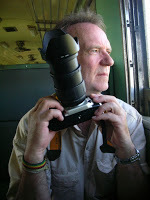

Published on April 18, 2016 14:19



